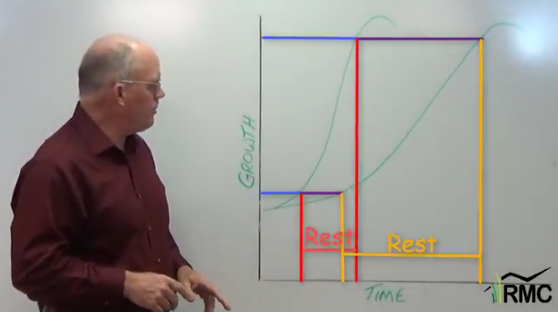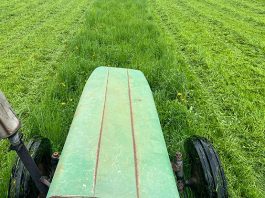This week’s report on forage and drought conditions in North Dakota provides some good information for everyone suffering from drought conditions, and that includes a large swath of the United States this year. Nearly 10% of the contiguous U.S. is now in “exceptional drought,” the highest for that designation since 2011.

Soil moisture conditions continue to decline as well. Just over half of the country soil’s are considered to have “adequate” soil moisture, while 38% of the country is experiencing soil moisture conditions in the “short to very short” categories.

Finally, here’s a look at the health of vegetation from March 5 to May 28, 2021. This is an Evaporative Stress Index (ESI) depicts the level of evapotranspiration, or how much and how quickly water is evaporating from the land surface and from the leaves of plants. Measuring evapotranspiration is useful because negative levels can indicate that plants are facing stress even if leaves have not yet wilted or turned brown. This map shows us that plants are having a hard time in many places right now.

Though localized rain has improved conditions in some areas, a move from extreme drought to severe drought may not make a huge difference to forage production. As Miranda Meehan, North Dakota State University Extension (NDSU) livestock environmental stewardship specialist says, “Unfortunately, the window for forage production is closing.” Like North Dakota, the plains and rangelands of the west are dominated by cool-season grasses. As a result, about 80% of forage growth occurs due to precipitation occurring between April 1 and June 30. Put in perspective she says that means ranchers who have tame grass pastures or hay land should expect at least a 50% reduction in forage production. In the D4 (exceptional drought) areas, tame grass production will be 25% at best. Hay production will also be down, and in some places hay fields may not even produce enough to justify haying.
What Can We Do?
The suggestions from NDSU to their graziers are helpful for everyone experiencing these conditions.
First prepare for a shorter grazing season.
Instead of grazing into the fall, you may find you’re running out of forage sometime in the summer unless you reduce animal numbers.
Annual forages can be a source of additional livestock feed if adequate moisture is available to support growth.
“At this point in the growing season, the best options for hay are warm-season grasses,” says Kevin Sedevic, NDSU Extension Rangeland Management Specilaist. “We recommend Siberian foxtail millet if available. If Siberian it is not available, use German foxtail millet. The next best option is sudangrass; however, sudangrass has an increased potential for prussic acid toxicity when drought stressed. (For more information on nitrate toxicity, visit “Nitrate Poisoning of Livestock.”)
“If the intent is to establish an annual forage for grazing, we recommend planting a diverse cover crop mix that includes both cool-season and warm-season species,” he adds. “This will increase the chance of establishment and reduce the overall risk of a total failed crop. A diverse cover crop also will have the potential to produce a higher-quality forage with less risk of toxicity.”
Crops damaged by the drought may be another option.
The drought also has been stressful on crops, resulting in thin stands with potentially low yields. If crops are unharvestable, producers may have the opportunity to use them as hay or for grazing. However, producers need to be careful because drought-stressed crops can be toxic. The most common toxicity is nitrates, which are common in small grains and corn. Failed crops should be tested for nitrates before feeding to livestock.
Use a combination of strategies for best results.
“Given the severity of this drought, producers will likely need to combine these strategies while reducing stocking rates through culling and/or early weaning,” Meehan says. Visit with your county Extension agent, or your local Natural Resources Conservation Service Office or Conservation District office to develop strategies to reduce livestock forage demand.





Just joined the group and already learned some stuff so glad I found you
Comments are closed.